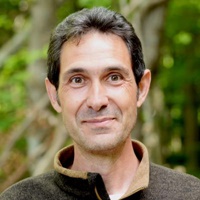Why the brand new Nature Restoration Law can reverse the relationship between the environment and society
Europe approves the first Nature Restoration Law (NRL) in the 70 years of the European Union's history, a text with important aspirations, which puts on the table a real paradigm shift in terms of ecological restoration. Several CREAF scientists involved in the restoration of terrestrial ecosystems and in informing public policies have a very positive assessment of this legal text, highlighting its timeliness and urgency, although they are somewhat cautious about its development. The next steps are now that the 27 member states of the EU draw up their own plan of action and implementation, to fulfill the horizon of having restored 20% of degraded terrestrial and marine ecosystems in 2030, 60% in 2040 and 90% in 2050.
The science of soil restoration
What does specialized research on ecological restoration of degraded soils say?
In the words of the CREAF research group specialized in soil restoration and integrated by Vicenç Carabassa Closa, Xavier Domene Casadesus and Sara Marañón Jiménez, the Law is ambitious and "the mere fact of applying it is a paradigm shift in ecological restoration, that will impact even on the relationship between nature and society". And they delve into the idea that "to achieve this new scenario, deep and structural changes are necessary in society, which, on the other hand, are totally necessary to face the climate and global crisis we are experiencing".
Other aspects that the research group values about the Law:
A considerable increase in the budget destined to implement the legal commitment is necessary, both on the part of the States, as well as on the part of the European Commission itself and the private companies responsible for the degradation.

"It is essential that the Law establishes the obligation to set up a soil quality monitoring system, according with the Soil Monitoring Directive. It is key to guarantee restoration projects' success"
SARA MARAÑÓN JIMÉNEZ, researcher in CREAF's soil restoration group
Maintaining already recovered areas, a novelty
To take into account the obligation set by the Law on maintaining the restored areas. This has been one of the weak points of the restoration projects executed to date, which often do not include follow-up and maintenance in the medium term, which leads to the deterioration of many restored spaces. It is also relevant to move this obligation out of protected spaces.
In addition, the obligation the Law sets to establish a soil quality monitoring system, according to the proposal of the Soil Monitoring Directive, is really welcome to guarantee restoration projects' success.
The Law's obligation to increase organic carbon stocks in mineral soils on farmland is essential to boost regenerative agriculture and organic fertilisation.
The obligation to increase the reserves of organic carbon in mineral soils of farmland –to promote regenerative agriculture and organic fertilization– is also essential. This increase is also indirectly fixed in forest soils, to improve forest management. And it is especially relevant in restoration projects of highly degraded soils, which can be implemented through technosols incorporating organic amendments..
The scientific voice on biodiversity
What is the pulse of science aimed at preserving biodiversity?
Some of CREAF's voice specialized in biodiversity and also involved in informing public policies is made up of researchers Lluís Brotons, Sergi Herrando Vila and Daniel Villero Pi, among others. The clear will of the European Commission to stop and reverse the loss of biodiversity is the first thing that stands out about the Nature Restoration Law. They highlight that a long-term perspective is needed to restore nature in Europe and that the Union is positioning itself with this law on timetables with concrete targets that should also contribute to the global objectives of biodiversity conservation.
Restoring nature requires a long-term perspective and Europe cannot afford further delays given the current global crisis.
Monitoring and indicators
Some of the Law indicators that they highlight are those of the surface of restored habitats and the Index of Butterflies in Pasture, which are already developed or are easy to implement, such as the monitoring of CBMS butterflies in Catalonia, or those of forest recovery, so some parameters would still have to be standardized. With regard to marine ecosystems, the NRL points out it is necessary to define reference indicators to promot their implementation. In any case, the Law obliges the Member States to monitor and produce them.

"We highlight the indicators of the area of restored habitats and the Butterfly Grassland Index, which are already developed or easy to implement. And those of forest recovery, for which some parameters still need to be standardised"
SERGI HERRANDO VILA, researcher specialising in biodiversity at CREAF
One of the innovative elements, closely linked to the indicators, are the specific objectives adopted by the Law. For example, it stipulates the need to increase by 10% the values of the indicator of agricultural birds in 2030 in those Member States that have populations of these species with values clearly lower than those of previous years, or that urban areas cannot lose green spaces at national level.
Science's assessment of forests and climate change
What is the valuation of science focusing on forest ecosystems?
"The Nature Restoration Law that has been approved confirms the need to act in all ecosystems, not just terrestrial ones, given the degradation to which we are leading the Biosphere," says CREAF researcher Santiago Sabaté Jorba. He also insists that it is "very relevant" to have approved it and to be aware that restoration takes time.

"The Law that has been approved confirms the need to act in all ecosystems, not only terrestrial, given the degradation to which we are leading the Biosphere"
SANTIAGO SABATÉ JORBA, CREAF researcher specialising in forest ecosystems
Collaboration
Facilitating the participation of different actors in order to gain effectiveness in implementing the legal text is another aspect highlighted by Sabaté Jorba. "Therefore, in practice we will have to see how implementation progresses. The economy still uses resources in a finite world as if it were infinite, and that is why it does not coincide with what the biosphere needs... if we want it to be pleasant to inhabit".
A first step
"The Law is a crucial first step. In the context in which we find ourselves, still in climate transition, with a climate that is changing rapidly and where the problem of ecosystem degradation is evident, it is necessary to have a reference framework to put a cap on degradation. It should help in that direction. We need to see how it is applied and how it is enforced".
From science diplomacy
What does the scientific voice that supports and informs the development of public policies think?
Think long-term, guarantee a future beyond the next election and understand that nature has other tempos. These are the keys of Alicia Pérez-Porro, CREAF scientific coordinator and scientific diplomacy specialist, when assessing the Nature Restoration Law at first glance.
Think big
The Law "proposes to leave short-term policies behind, not only to restore 20% of ecosystems and habitats by 2030, but also to have regulations that promote complementary policies to the objectives, to deal with the negative effects of change climatic", points out Pérez-Porro.

"Science has widely informed the Nature Restoration Act since the first drafts and is also supported by scientific activism"
ALICIA PÉREZ-PORRO, scientific coordinator specialising in science diplomacy at CREAF
Science and the Nature Restoration Law
One of the axes for Alicia Pérez-Porro is that the recently approved regulation "is widely informed by science, since it started as a draft, and is also supported by scientific activism". And she points out that "scientists are leaving our laboratories and getting wet and providing our support".
International commitments
"It is also a necessary law to be able to meet international objectives, such as the Global Biodiversity Framework (GBF)", remembers the CREAF scientific coordinator. And she adds that "thinking long-term is always a paradigm shift, especially because political cycles are short, and this is where the difficulty always lies. But we are really at a point where we already have the effects of the multiple environmental crisis and we must be able to guarantee a future that goes beyond the next elections, because nature has other tempos".







